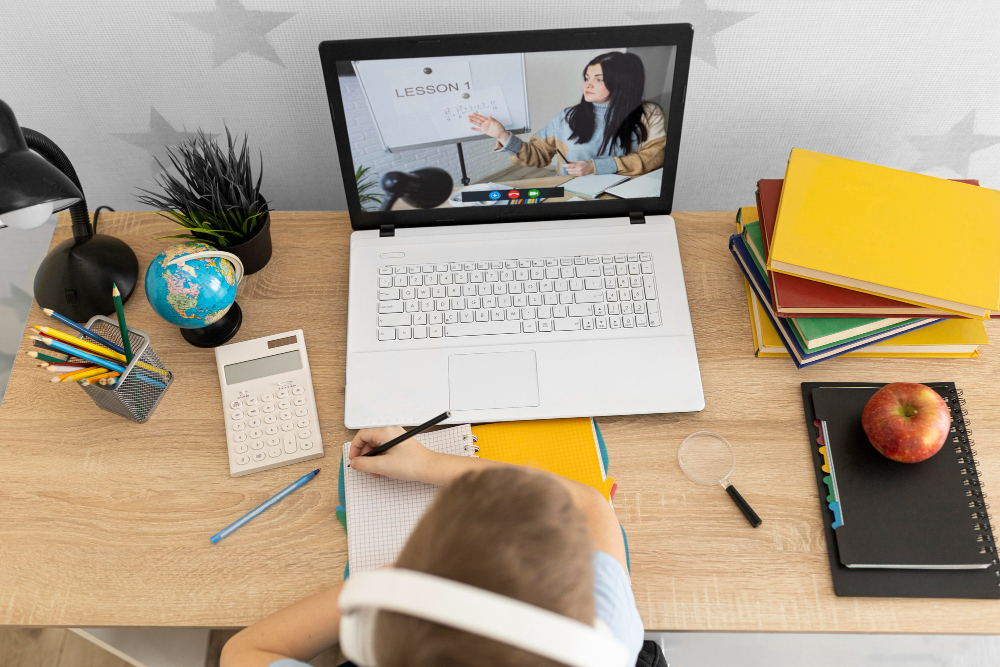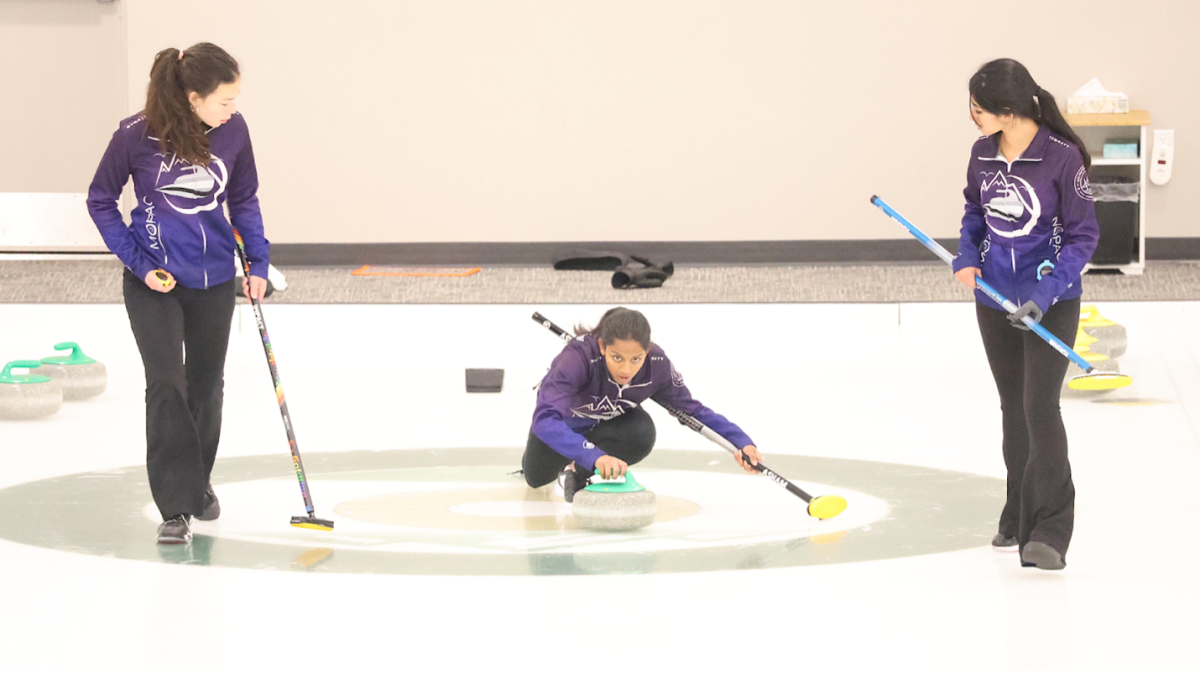Four years after the COVID-19 pandemic forced schools across the country to transition to online learning, Nicole Andrews continues to teach through a Zoom screen.
The history teacher is among many Bay Area teachers who have not returned to in-person learning even after pandemic restrictions were lifted in 2022. Instead, she teaches virtual classes under San Ramon Valley Unified School District’s Venture Independent Study – one of a handful of alternative education programs in the Bay Area that rely on virtual learning.
These primarily K-12 virtual schools prioritize flexibility and independence. Students meet their teachers online a few times a week and complete most of their work independently, freeing up their schedules for other activities or extracurriculars.
“Some students just don’t want the structure and rigor of a traditional bell schedule,” said Andrews, who teaches geography and world history. ”They like the flexibility that Venture offers.”
Before COVID, you didn’t see traditional schools that were completely online. However, as Devlin Peck Consulting reports, dedicated virtual schools are likely here to stay.
Pandemic education
Venture started as an independent study program in 1978, during which time students would meet one teacher in-person for all their subjects once or twice a week and do most of their learning independently.
Venture Principal Lynsie Castellano, who also served as the principal of alternative education at Mt. Diablo Unified School District for seven years before coming to Venture in 2022, said the San Ramon school was an alternative for actors or athletes who needed to be able to miss school and still graduate. But all that changed after the pandemic when schools across the nation vacated classrooms and pivoted exclusively to online learning for the first time.
“[COVID-19] affected not only Venture, but almost all the independent study programs state and even nationwide,” Castellano said. “When people had to do online instruction with COVID, we learned a lot of things with that.”
Castellano explained that California introduced legislation after schools returned in person, mandating that districts continue to provide a virtual option for students who didn’t feel safe returning to school. To comply, many districts combined their preexisting independent study programs with virtual learning.
Independent study programs typically see students not coming to school daily, so it made sense for the two programs to merge.
Venture implemented a virtual academy with strictly online instruction. Its enrollment ballooned from 150 students to more than 1,200 during that time as students hesitant to return to in-person schooling enrolled. Today, although enrollment has dropped below pre-pandemic levels, the virtual learning aspect of Venture remains.
“We feel like students should be back in person if they can, but we want to still provide an independent study option that uses some of the tools that we learned during COVID,” Castellano said.
Not for everyone
For many teachers and students, mandatory virtual learning is not an experience they want to repeat.
Alessandra Castro, a core teacher at San Ramon’s Iron Horse Middle School, said that virtual learning stifled social interaction and made it easy for students to disengage with education and their peers. She found herself staring back at blank, unresponsive boxes when trying to teach online.
“There’s nothing that can replace the conversations and the back and forth social interactions that take place in in-person learning,” Castro said. ”Those moments are priceless. That’s where we form bonds. And that was completely missing.”
Many students also admitted that virtual learning made it much easier to “zone out” of class by turning off their camera, causing them to learn less.
“I liked [virtual learning] because I could just play video games during school,” admitted Devon Yu, a 12th grader at San Jose’s Abraham Lincoln High School. “But academically, it was much weaker.”
Castro said that teachers and students still are experiencing the repercussions of virtual learning today. She sees students who are disconnected from their peers and with gaps in their education after they stopped in-person learning.
Alternative education schools like Venture take a fundamentally different approach to virtual learning without the pandemic necessitating that everyone learns online. Instead of a one-size-fits-all approach that encompasses all students, Venture now primarily enrolls students who can thrive in an online learning environment.
“Students who are responsible and hardworking benefit the most, students who want to work more independently,” history teacher Andrews said.
Some students like Jaden Macomber were able to succeed during online learning. The senior at San Mateo’s Hillsdale High School said the environment did not deter him from learning.
“I had good teachers online and I paid attention and did my work,” said Macomber, who describes himself as an introvert. “I actually had a worse experience junior and senior year [after school returned in person].”
The virtual aspect of Venture also offers increased flexibility for some students to pursue extracurricular activities. Senior Dan English frequently travels to Europe to race in cyclocross and mountain biking competitions. He said his online classes at Venture allow him to keep up with his education while he is on the other side of the globe.
Andrews said Venture online classes also are much smaller than pandemic classes. Her largest class has just eight students. The school also requires students to turn on their cameras, which increases engagement and allows her to better connect with her students.
“Students have gotten used to [virtual learning] and for a couple years now they know the expectations,” Andrews said. “Teachers have clearer and better expectations. Most students do have their cameras on, especially the younger ones as they move through grades.”
Castellano said that Venture prioritizes opportunities for students to meet each other in person and make friends. It hosts in-person access periods every Friday for struggling students to get support and meet their teachers. It also hosts live social events for students like its Fall Fest and Valentine’s Self Love Day with workshops.
“Having those social interactions is really important,” Castellano said. “You don’t get as much as those opportunities [through virtual learning] and so that’s why we’re trying to create more community building.”
Also dedicated to 100% virtual learning is Virtual Academy in Pleasanton. The K-12 school aligns with many colleges that offer credit for virtual and hybridized courses.
“Now, since the pandemic, there’s so much remote working that now the idea of remote school leading into remote working isn’t a foreign idea,” Castro said. “The world has changed.”
*Additional resources:
National Center for Education Statistics
Andrew Ma is a 12th grader at California High School in San Ramon.



